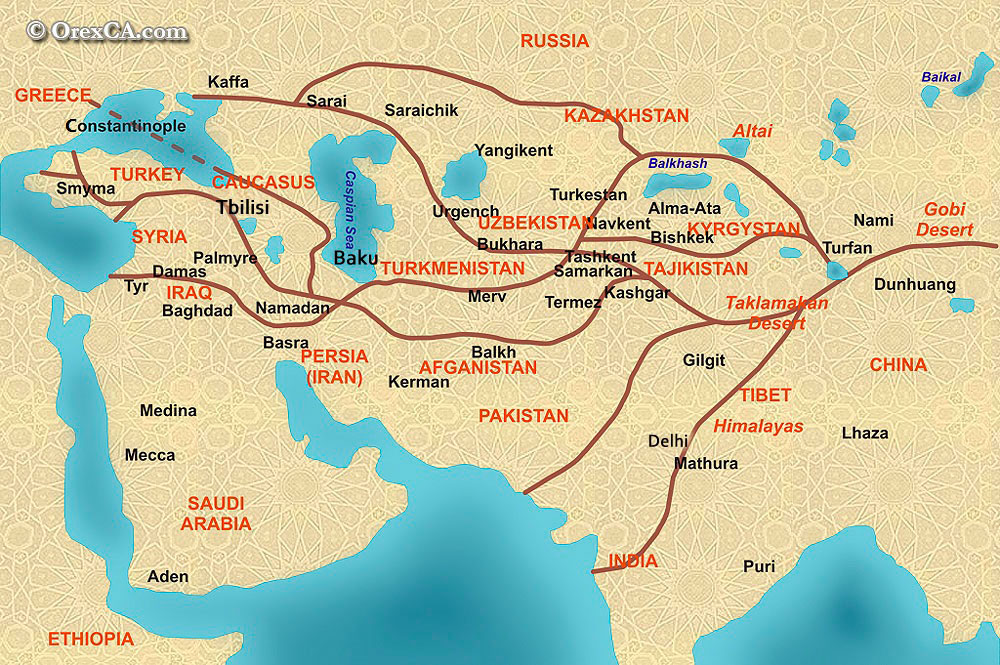
Commodities such as gold, precious stones, and glass headed towards China while furs, ceramics, jade, bronze objects, lacquer and iron were brought into the west. Silk was not the most heavily traded commodity, but one of the most remarkable. Its soft texture and light weight was completely new to Rome were it quickly became popular. Throughout the regions the biggest impact the Silk Road had was the expansion of religion. Buddhism came to China from India this way, Islam spread widely.
The decline of the Silk Road had many contributors. The Crusades, marauding barbarians, but over time the `Sea Silk Route' brought the biggest change. The land route was less profitable (too many middlemen) and becoming more dangerous (Mongols). Advances in seafaring and boat construction, emerging Asian markets to the south pushed merchants to abandon the Caravan and head to sea. From its birth before Christ into the 13th-14th century The Silk Road has had a significant impact on the development of civilizations from both sides of the continent.

No comments:
Post a Comment